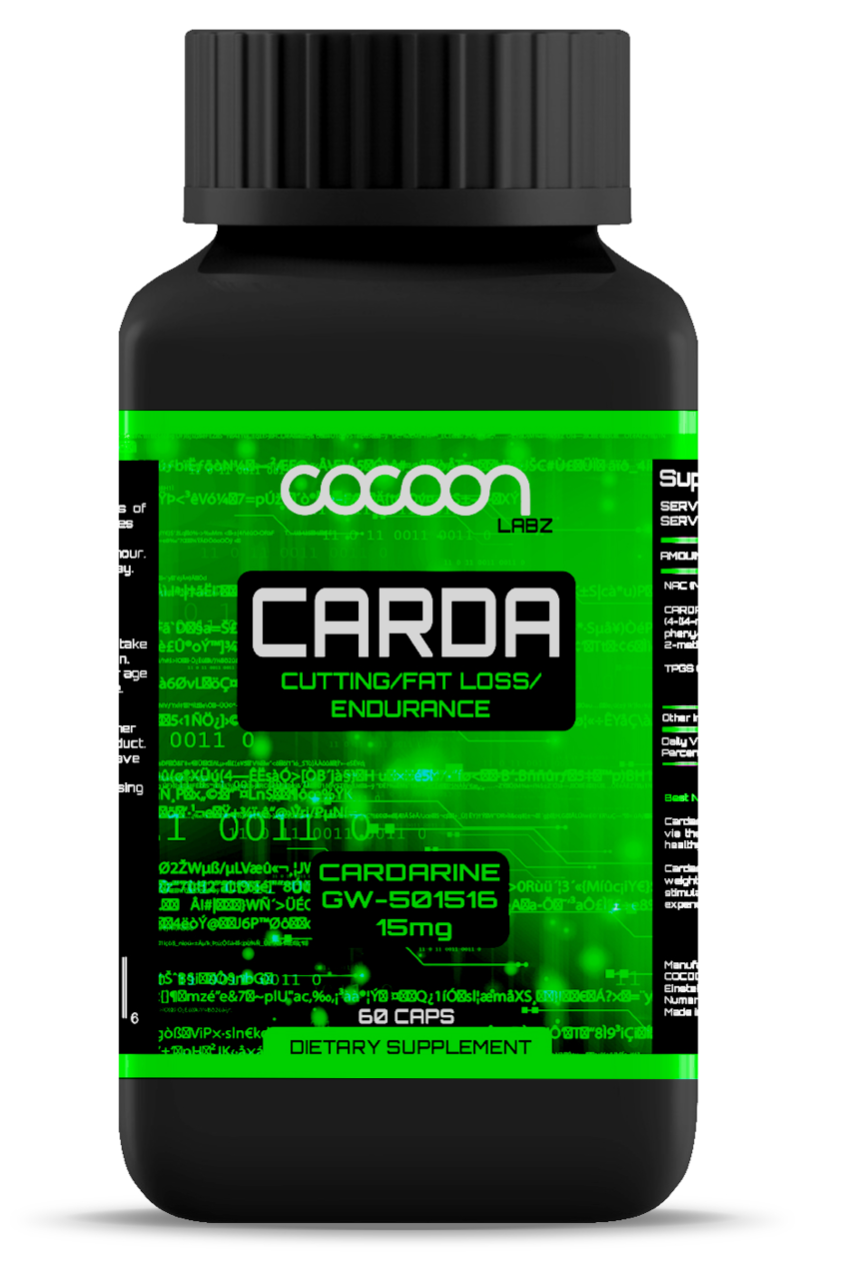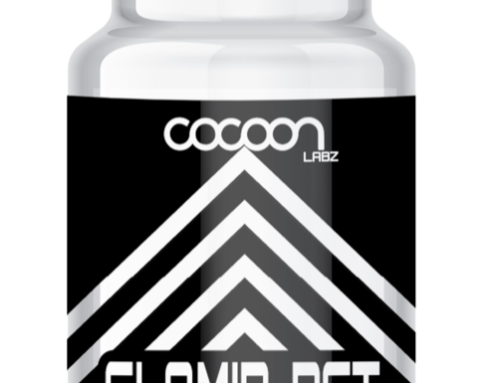
Introduction to SARMs
Selective androgen receptor modulators, also known as SARMs, are marketed as having similar positive effects on muscle and strength that pro-hormones and anabolic androgenic steroids (AAS) offer, but with fewer side effects. Essentially, SARMs are compounds that can block or stimulate key receptors in body tissue, which can help to increase the positive effects and decrease the unwanted side effects based on the compound’s mechanism(s) of action.
SARMs have been shown to increase muscle mass, bone mass, and fat loss without significant increases in estrogen or shutting down the Hypothalamic-pituitary-gonadal axis (HPG axis). As defined by Negro-Vilar, an ideal anabolic SARM is “orally active agent with once daily dosing and anabolic effects on muscle and bone, but no or lesser activity in the prostate.”
https://cocoonlabz.com/product/prostate-60-caps/
Key Terms
Before we delve further in to this article, I want to provide you with a list and meaning of common acronyms and terms used when discussing SARMs.
- HPG axis – Hypothalamic-pituitary-gonadal axis. A term used to describe three glands in the endocrine system (hypothalamus, pituitary gland, and gonads) as one entity.
- LH – Luteinizing hormone. A hormone released by the pituitary gland. Too much or too little LH may result in infertility and other issues with sexual reproductive organs.
- FSH – Follicle stimulating hormone. Hormone associated with reproduction and the development of eggs in women and sperm in men.
- TP – Testosterone propionate. Testosterone derivative that is typically injected in to the muscles.
- DHT – Dihydrotestosterone. Sex steroid and androgen hormone synthesized from testosterone in the prostate, testes, hair follicles, and adrenal glands.
- SHBG – Sex hormone-binding globulin. Binds tightly to testosterone, DHT, and estradiol; measured to determine if males have low testosterone and if females produce too much testosterone.
- AST – Aspartate aminotransferase. An enzyme found in the blood that when high, may indicate liver damage.
- ALT – Alanine aminotransferase. An enzyme found in the blood that when high, may indicate liver injury.
- Aromatization – the process of converting a compound in to an active androgen or estrogen
- 5-alpha reductase – an important enzyme during the steroid metabolism process
- PSA – Prostate-Specific Antigen Test. A blood test measuring the amount of a specific protein produced by cells in the prostate gland; values below 4.0 ng/mL are considered healthy whereas values above 4.0 are recommended to get an in-depth prostate examination.
- LPL – Lipoprotein lipase. An enzyme responsible for storing calories as fat.
- BMD – Bone mineral density. The amount of mineral matter per square centimeter of bone; used as an indirect indicator of osteoporosis and bone fracture risk.
- PCT – Post cycle therapy. Compounds used to restart natural testosterone production.
- ED50 – The median effective dose. This is the dose that produces the desired effect(s) in 50% of the population.
- EB – Estradiol benzoate. A substance necessarily to maintain sexual behavior in rats during experiments.
- PPAR – Peroxisome proliferator-activated receptor delta. They play a critical role as lipid sensors and regulators of lipid metabolism (i.e. fat storing and burning).
- AMPK – 5′ AMP-activated protein kinase. An enzyme playing a key role in energy homeostasis at the cellular level. AMPK activation can oxidize fatty acids, stimulate muscle glucose uptake, as well as inhibit cholesterol, fat cell, and triglyceride synthesis.
- HDL – high-density lipoprotein. Also known as “good cholesterol”.
- VLDL – very-low-density lipoprotein. A subset of LDL, also known as “bad cholesterol”.
- AICAR – 5-Aminoimidazole-4-carboxamide ribonucleotide. Analog of adenosine monophosphate (AMP) that can stimulate AMPK.
- Estradiol – Form of estrogen. Small amounts are released by the testes in males to prevent sperm from dying too early and in women is plays a large role in the growth and development of the womb, fallopian tubes, vagina, and breasts.
- Orchidectomized – Testes removed. Sometimes used as a more technical term for castrated males.
- Ovariectomized – Ovaries removed. Sometimes used as a more technical term for castrated females.
Why Use SARMs?
In general, SARMs offer three key benefits – increased muscle mass, decreased fat mass, and increased bone mass.
SARMs aren’t just designed and meant for athletes; as previously discussed there are a slew of populations that could benefit from SARMs. Those with one or more of the following conditions could benefit from SARMs: muscle wasting disorders (e.g. sarcopenia, amyotrophic lateral sclerosis, and cystic fibrosis), sports injuries, burn injuries, weakness and/or body wasting due to cancer or HIV, and frailty and/or muscle atrophy as a result of the aging process.
Although there are many drugs designed to improve the health of these populations, SARMs also have the unique benefit of being non-methylated and non-aromatized by the body, so they’re not toxic to the liver nor do they convert in to other active androgen or estrogen compounds. Liver toxicity and aromatization is a very serious concern when using pro-hormones and AASs. As you can see, SARMs benefit both chronically ill individuals as well healthy individuals looking to maximize quality of life.
The assessment of SARMs on living organisms, mainly rats, has shown that these compounds generally increase muscle mass without significantly affecting prostate weight. Dramatic shifts up or down in prostate weight can lead to a slew of health complications.
A few Phase I trials of SARMs in humans have been performed, which resulted in increases of 1.0-1.5kg of fat-free mass over a 4-6 week period. Although these gains are modest, these studies looked at the effects of SARMs on people with muscle-wasting conditions. It would be interesting to see clinical research of the effects SARMs on athletes.
For comparison, the typical fat-free mass gain over a 4-6 week period dosing 300-600mg of testosterone enanthate per day is 5-7kg. Keep in mind that the side effects of testosterone are much harsher than those of SARMs. Phase I and II clinical trials of 1st generation SARMs resulted in decreased HDL and SHBG as well as small and brief elevations in AST and ALT.
Furthermore, SARMs have demonstrated the ability to minimize or prevent muscle trophy when muscles were immobilized in casts. [19] This is great news for athletes who work hard on the field and in the weight room to build muscle mass, strength, and power as SARMs may positively impact the recovery process.
Some SARMs also appear to activate AMPK, a mechanism involved in fat oxidation and lipolysis. Testosterone-derived compounds also increase muscle mass and decrease fat mass, but unlike these compounds SARMs do not significantly suppress LH and FSH level unless exceptionally high doses (3-4x the median effective dose) are administered. This further supports the notion that SARMs may be safer long-term than testosterone-derived steroidal compounds.
Androgens appear to increase periosteal bone formation in cortical bone whereas estrogen compounds decrease or depress this formation. In simpler terms, androgens help to build the dense and compact outer layer of the bone which helps to support the body, protect organs, store calcium, and provide levers for movement.
SARMs also appear to decrease endocortical and trabecular bone turnover. A high bone turnover rate typically leads to cancellous bone loss, which is the spongy, softer, weaker, and more flexible bone found at the end of long bones, proximal to joints and within the interior of vertebrae.
Increasing bone formation and decreasing bone turnover suggests SARMs are an excellent treatment option for those developing or diagnosed with osteoporosis. Osteoporosis is the condition by which the creation of new bone doesn’t keep up with breakdown of old bone as a result, bones become weak and brittle. Post-menopausal are at the highest risk for osteoporosis, but these findings suggest SARMs to be excellent compounds for anyone looking to strengthen their bones and minimize fractures.
The fitness industry uses SARMs in many of the same ways as the general population – to increase muscle mass, maximize fat loss while preserving lean mass, as well as rehabilitate injuries via improved bone and muscle strength. However, some fitness enthusiasts use SARMs in between pro-hormone, AASs, and testosterone cycles for PCT or as an alternative to those three aforementioned compounds.
Although pro-hormones, AASs, and testosterone cycles can produce rapid and dramatic increases in muscle and strength, they’re extremely harsh on the body and often result in numerous, series side effects. These side effects include: expedited prostate cancer development, baldness, acne, excessive body hair growth, acne, male breast development (gynecomastia), high blood pressure, poor liver and cholesterol blood panels, heart growth, and elimination of natural testosterone production.
It’s clear that using these substances should NOT be taken lightly as they could potentially ruin your quality of life. However, given the competitive nature of the fitness industry, fitness professionals may use SARMs, pro-hormones, AASs, testosterone, or a number of many other substances to look and perform their best.
Popular SARMs
Andarine (S-4, GTx-007)
https://cocoonlabz.com/product/s4-andarine-35mg-60-caps/
Andarine is an orally active nonsteroidal SARM, Inc. Researchers found that S-4 is tissue-selective, stimulates the anabolic organs more than the androgenic organs, doesn’t significantly suppress LH or FSH, doesn’t increase estradiol levels, and elicits similar or greater anabolic activity compared to TP. This means that S-4 can increase muscle and bone mass without affecting the prostate.
Complications involving the prostate are a serious risk when injecting testosterone derivatives like TP. Although Andarine binds to androgen receptors 33% as effectively effectiveness of testosterone, a 3mg/kg/dosage of S-4 can build muscle mass and strength in castrated male rats.
The primary use of Andarine in the fitness industry is during a fat loss phase. Andarine accomplishes this goal by decreasing LPL and some users even report an increase in muscle mass and decrease in water retention while using this compound. [27] Based on these findings and reports, Andarine appears to be an excellent compound for maximizing fat loss while preserving or slightly increasing muscle mass.
However, Andarine does come with two very serious side effects when dosed at 50+mg per day – suppression of the HPG axis and vision disturbances (night-time blindness and/or a yellowish tint in vision). Although most users report that these issues are temporary and quickly subside after they cycle off Andarine.
Nonetheless, it’s extremely important that you approach Andarine and ALL SARMs with CAUTION. These compounds are extremely strong and only meant for those who have extensively researched and considered the costs and benefits.
The chart below outlines dosing recommendations based on your goal; all daily dosages should be split in to multiple sub-doses during the day (due to a short half-life of the compound) and run on a 5 days on/2 days off protocol to minimize vision side effects:
| Goal | Dosage | SARMS That Stack Well |
| Strength Gain (minimal gains in muscle mass) | 50+mg/day for 6-8 weeks | N/A |
| Recomposition | 50-75mg/day for 4-8 weeks | N/A |
| Cutting | 50mg/day for 6-8 weeks | Ostarine & GW-501516 |
Researchers dosed Andarine or DHT in a sample size of 120 ovariectomized female rats for 120 days and found that Andarine increased bone strength, decreased fat mass, maintained whole-body BMD, and maintained whole-body cortical bone content to a greater degree than DHT. It appears that Andarine can decrease bone fracture risk by not only ensuring bone turnover rate stays low but also increasing muscular strength.
Ostarine (MK-2866, GTx-024)
https://cocoonlabz.com/product/osta-90-caps/
Ostarine is an orally active nonsteroidal SARM, Inc. A 12-week double-blind, placebo-controlled phase II clinical trial on 120 healthy elderly men (60+ years old) and postmenopausal women showed that Ostarine significantly increased lean body mass, improved physical function, and improved/increased insulin sensitivity.
In the fitness industry users typically take Ostarine during bulking and recomposition phases. During bulking phases some users report 7lb increases in lean body mass in just 8 weeks and users report decreased fat mass and slight increases in muscle and strength (most likely due to the compound’s nutrient partitioning effects).
A compound that offers both fat loss, muscle gain, and strength gain benefits sounds extremely appealing to athletes looking to take their performance to the next-level. However, Ostarine does have two significant side effects – HPG axis suppression and elevated estradiol levels; both of which users report can be remedied with a 3-week PCT.
If you do decide to take Ostarine, it’s extremely important that you follow the directions on the label and perform the PCT to mitigate further, more serious side effects.
The chart below outlines dosing recommendations based on your goal; all dosages can be taken one per day (due to a 24-hour half-life) and don’t require an intra-week cycling protocol like Andarine:
| Goal | Dosage | SARMS That Stack Well |
| Bulking | 25mg/day for 8 weeks | N/A |
| Recomposition | 20-25mg/day for 6-8 weeks | S-4 & GW-501516 |
| Cutting | 15-20mg/day for 6-8 weeks | Andarine |
| Injury Rehabilitation | 12.5mg/day for 6-8 days | N/A |
Ligandrol (LGD-4033)
https://cocoonlabz.com/product/liga-60-caps/
Ligandrol is an orally active nonsteroidal SARM, developed by Ligand Pharmaceuticals, that has completed Phase I clinical trials which involved multiple ascending doses in healthy volunteers.
According to the National Institute of Health’s U.S. National Library of Medicine, in Phase I clinical trials “Researchers test a new drug or treatment in a small group of people for the first time to evaluate its safety, determine a safe dosage range, and identify side effects.” These clinical trials showed that humans could safely tolerate up to 22mg/day of this compound for 14 consecutive days; this compound contributed to increases in lean body mass, decreases in fat mass, increases in strength, as well as an increases in senses of well-being.
Ligandrol also appears to decrease bone turnover rate, which appeals to those with osteoporosis. Based on these findings, it appears that LGD-4033 is an excellent SARM for bulking, cutting, recomposition, or strength-gain phases.
The chart below outlines dosing recommendations based on your goal; all dosages can be taken one per day and don’t require an intra-week cycling protocol like Andarine:
| Goal | Dosage | SARMS That Stack Well |
| Bulking | 5-10mg/day for 8 weeks | N/A |
| Recomposition | 5-8mg/day for 8 weeks | Cardarine |
| Cutting | 3-5mg/day for 8 weeks | Andarine, Cardarine, Ostarine |
Ligandrol doesn’t appear to decrease LH or FSH nor does it appear to increase PSA or estradiol, but it may decrease total testosterone, free testosterone, and SHBG, so a full PCT is recommended. More specifically, at dosages below 5mg/day, total testosterone may slightly decrease yet stay in the “healthy” reference range of 270-1070ng/dl while dosages above 5mg/day may decrease HDL and total testosterone values to clinical deficient values.
AC-262,356
https://cocoonlabz.com/product/acca-60-caps/
AC-262,356 is an orally active nonsteroidal SARM that produces anabolic effects roughly 66% as strong as testosterone and has a potency of about 27% as an androgen. This means the compound doesn’t significantly affect the weight of the prostate and seminal vesicle.
A two week study on castrated male rats found that this compound increases muscle mass, as measured by levator ani growth, and decreased elevated LH levels. Elevated LH levels can indicate poorly functioning testes in males and an imbalance of sex hormones in females.
These findings indicate that this compound can is beneficial for both increasing muscle mass and regulating some hormones.
S-23
https://cocoonlabz.com/product/s-23-60-caps/
S-23 is an orally active nonsteroidal SARM with high binding affinity to androgen receptors that appears to increase muscle mass, decrease fat mass, decrease prostate size, and act as an effective and reversible hormonal male contraceptive in rats. The ED50 in castrated male rats for decreasing prostate weight and increasing muscle mass was 0.43mg/day and 0.079mg/day, respectively. [12] Assuming the rat weighs 550 grams and adjusting values are adjusted for a 180lb male, the dosages would be about 63.5mg and 11.75mg per day, respectively.
Researchers found that treating non-castrated male rats for 14 days with 0.1mg/day or more of this compound, decreased LH levels by 50+%, significantly decreased prostate size, and significantly increased levator ani muscle size. Although the increased muscle growth is a positive sign, the decreased LH levels and prostate size is a big red flag.
S-23 was also found to increase BMD, and reduce fat mass in lab rats. This SARM is particularly unique because of its potential as a contraceptive. When non-castrated male rats were treated with 0.1mg/d of S-23 and EB for 10 weeks, LH and FSH levels decreased, 4 of the 6 male rats had no sperm in the testis, and none of the six rat couples experienced pregnancies during mating trials.
Translated to 180lb male at a 1:1 dosage, this would be the equivalent of about 14.9mg/day. Furthermore, 100 days after treatment ceased, the infertility was fully reversed and the six rat couples experienced a 100% pregnancy rate. These findings are absolutely incredible and could change the birth control industry as we know it; however, more clinical testing is needed on humans and further processing is needed to minimize or eliminate side effects.
Cardarine (GW-501516)
https://cocoonlabz.com/product/carda-60-caps/
GW-501516 is discussed last in this section because it’s often mislabeled as a SARM. Cardarine is a selective activator which binds to PPAR receptors rather androgen receptors. Cardarine acts on a different pathways but its effects are equally as impressive as SARM compounds. Cardarine activates AMPK, which is responsible for oxidizing fatty acids and stimulating muscle glucose uptake.
Researchers found administering this compound helped to reverse metabolic abnormalities in pre-diabetic obese men with metabolic syndrome. [42] With more than 33% of the adult population and 16.7% of the child (ages 6-19) population in the United States considered to be obese, this compound could be a key element in controlling this crisis.
Further examination on rats and monkeys showed that this compound not only helped to burn fat and build muscle, but it also eliminated the occurrence of diet-induced obesity and Type II Diabetes, increased HDL, and lowered VLDL. This compound has a number of impressive upsides, but it does have one potential, serious, downside. When Cardarine is administered in excessively high doses in rats over a relatively long period of time, the compound may cause cancer.
A few studies arrived at this finding while others show that Cardarine is completely harmless – it doesn’t suppress key hormones, it’s not toxic, nor does it cause the typical side effects seen with use of SARMs and AASs. Although Cardarine is not technically a SARM, it’s still prohibited at all times by the World Anti-Doping Agency (WADA) and IOC because it’s considered a metabolic modulator that activates AMPK.
In the fitness community, this compound is most commonly used to improve exercise endurance and assist in fat loss. While dosing 10mg/day of Cardarine in 8 week cycles appears to be effective for dramatically increasing both aerobic and anaerobic endurance, stacking Cardarine with AICAR appears to magnify these effects to a greater degree.
Increasing endurance via cardiovascular training can improve intra-set recovery during weight training sessions. Improved recovery means you’ll be able to train at a higher volume, more frequently, and/or more intensely. To assist in fat-loss and preserve muscle mass, users dose Cardarine 10-20mg per day and may stack with Ostarine and Andarine during an 8-week cycle.
As with any supplement, start with the minimum recommended dose and adjust accordingly based on your response.









